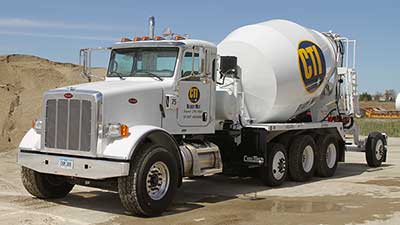Laying concrete is a very particular task. It involves specific machinery and materials, and it requires precise execution in order to keep structures stable for practically forever. In addition, concreting revolves around external conditions, such as hot and cold weather. Extreme temperatures can make laying concrete an even more precise process than it already is. To best prepare, we will enlighten you to potential problems and solutions to hot weather concreting.
5 Common Concrete Problems During Hot Weather
 Water plays a huge role in the creation of ready mix concrete. It’s the ability to control the moisture within concrete that allows for proper setting and curing. Problems can arise as a result of too much moisture or too little moisture. For hot weather concreting, too little moisture is the common problem. Experts have determined that temperatures of 80° F and above can be threatening to the concrete laying process. Dallas, TX sees temperatures above 80° for over half the year! Such temperatures can affect concrete in the following ways:
Water plays a huge role in the creation of ready mix concrete. It’s the ability to control the moisture within concrete that allows for proper setting and curing. Problems can arise as a result of too much moisture or too little moisture. For hot weather concreting, too little moisture is the common problem. Experts have determined that temperatures of 80° F and above can be threatening to the concrete laying process. Dallas, TX sees temperatures above 80° for over half the year! Such temperatures can affect concrete in the following ways:
- Accelerated slump loss
- Greater potential for plastic and thermal cracking
- Loss of long-term strength
- Untimely setting and curing
- Cold joints could form
Essentially, the longer concrete has to cool the better (except in extreme cold temperatures). As it cools, the mixture crystallizes and takes form. Thus, hot temperatures can lessen cooling time, preventing concrete from reaching its maximum strength. It’s not just hot temperatures either. High winds and high humidity can also contribute to unwanted rapid cooling.
So, reverting back to moisture control…
The professionals handling the concreting must ensure the concrete is staying moist throughout the process.
How To Overcome Hot Weather Problems
- Place concrete at cooler times, such as early in the morning or late at night. This way you don’t have to adjust your methods and you can proceed as normal.
- Moistening the subgrade. The subgrade has a good chance of staying moist as it will not be exposed to the sun once the concrete is poured.
- Prepare your staff for escalated curing. Whether this means using more tools, more workers, or both, the necessary adjustments need to be taken to produce the best results.
- Protect concrete from external factors by making use of sunshades, wind breakers, sheeting, evaporation retarders, etc.
- Intentionally cool one or more of the aggregates included in the mixture. As result, the concrete will be cooled enough to overcome the surrounding heat.
- Lay the concrete after the walls and roof are built. This will better manage the heat by protecting the concrete from the sunlight.
- Cover all equipment while not in use to prevent it from heating. Heated equipment will only act as a catalyst to heat and humidity in the air.


